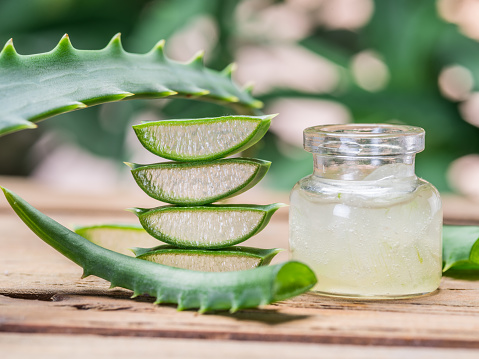Aloe Vera Health Benefits
Aloe Vera Health Benefits is a succulent plant that has been used for centuries for its medicinal properties. The gel extracted from the leaves of the aloe vera plant contains a variety of beneficial compounds, leading to several potential health benefits. Here are some of the commonly recognized health benefits of aloe vera:
1. Skin Health:
Aloe vera gel is often used topically to soothe and moisturize the skin. It can help alleviate skin conditions such as sunburn, dryness, acne, psoriasis, and eczema. Aloe vera is believed to have anti-inflammatory and wound-healing properties, promoting the regeneration of skin cells.
2. Digestive Health:
Aloe vera juice or gel, when consumed orally, may help improve digestive health. It can soothe and calm the digestive system, reducing symptoms of acid reflux, heartburn, and irritable bowel syndrome (IBS). Aloe vera is also thought to have mild laxative effects, aiding in relieving constipation.
3. Immune System Support:
Aloe vera contains various bioactive compounds, including polysaccharides and antioxidants, which may help support the immune system. These compounds can potentially enhance immune function and protect the body against harmful pathogens.
4. Anti-Inflammatory Properties:
Aloe vera possesses anti-inflammatory properties that can help reduce inflammation both internally and externally. It may be beneficial in managing inflammatory conditions such as arthritis, joint pain, and inflammatory bowel diseases (IBD).
5. Antioxidant Effects:
Aloe vera contains antioxidants, including vitamins A, C, and E, as well as flavonoids and polyphenols. These antioxidants help combat oxidative stress caused by free radicals, which are associated with various chronic diseases and aging.
6. Wound Healing:
Aloe vera gel is commonly used to promote wound healing. Its antimicrobial properties can help prevent infections, while its soothing and moisturizing effects accelerate the healing process of minor cuts, burns, and abrasions.
7. Oral Health:
Aloe vera gel or mouthwash made from aloe vera can contribute to oral health. It may help reduce dental plaque, gum inflammation, and oral ulcers. However, it’s important to use aloe vera oral products as directed and avoid swallowing them.
8. Diabetes Management:
Some studies suggest that aloe vera may help regulate blood sugar levels in individuals with type 2 diabetes. It may enhance insulin sensitivity and improve glucose metabolism, but further research is needed to establish its effectiveness and safety.
Nutrient Value of Aloe Vera
Aloe vera is a plant that contains various compounds in different parts, including leaves, gel, and latex. Here is a breakdown of the composition of aloe vera:
1. Gel:
The gel is the clear, jelly-like substance found in the inner part of the aloe vera leaves. It makes up the largest portion of the plant and is commonly used for medicinal and cosmetic purposes. The composition of aloe vera gel can vary, but it typically contains:
-
- Water: Aloe vera gel is primarily composed of water, usually making up about 99% of the gel.
- Polysaccharides: Aloe vera gel contains complex carbohydrates called polysaccharides. The main polysaccharide in aloe vera is acemannan, which is believed to have immune-stimulating and anti-inflammatory properties.
- Vitamins: Aloe vera gel contains various vitamins, including vitamin A, vitamin C, vitamin E, and several B vitamins (thiamin, riboflavin, niacin, B6).
- Minerals: Aloe vera gel provides several minerals such as calcium, magnesium, potassium, sodium, zinc, copper, and iron.
- Enzymes: Aloe vera gel contains enzymes such as amylase, lipase, and catalase, which can aid in digestion and have potential therapeutic effects.
- Amino Acids: Aloe vera gel contains several essential and non-essential amino acids, which are the building blocks of proteins.
- Phenolic Compounds: Aloe vera gel contains various phenolic compounds, including flavonoids and anthraquinones, which have antioxidant and anti-inflammatory properties.
2. Latex:
Latex is a yellowish sap found just under the outer skin of the aloe vera leaf. It contains a different composition of compounds compared to the gel and is typically not consumed internally due to potential laxative effects. The latex contains:
-
- Anthraquinones: Aloe vera latex contains anthraquinone derivatives, including aloin, barbaloin, and aloe-emodin. These compounds have laxative properties and are sometimes used in certain laxative products.
- Resins: Aloe vera latex also contains resinous substances.







